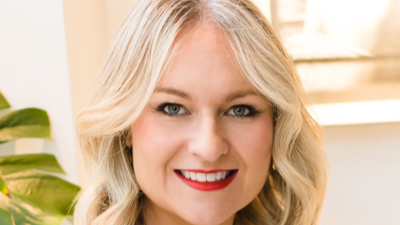Table of Contents
- Tell us about your business and how you got started
- Did you launch in the UK before you started exporting?
- How much of an impact did Brexit have on your business?
- What about the tariffs President Trump announced on ‘Liberation Day’?
- Which digital tools do you use to monitor where your sales are coming from?
- What have you learned the hard way about exporting?
- Have increased costs forced you to put up your prices?
Entrepreneur: Caroline ‘Caz’ Rimmer
Age: 49
Business Name: Tregaver Fibre
Industry: Agriculture / Retail
Location: Cornwall
Tell us about your business and how you got started
I sell my ethically farmed, sustainable fibres to crafters all over the world, building up my customer base using Etsy ads, Google ads, and social media platforms like Facebook, Pinterest, Instagram, and TikTok.
I left my job as a lecturer around seven years ago, because the direction that education was going, with so much box-ticking, just wasn’t working for me anymore. I wanted an income stream that would allow me to keep animals without having to send them to slaughter. The only thing I could think of was fibre.
I got some sheep and started my business in wool production. I was completely new to retail and had to teach myself everything from scratch. Alongside running my own farm, I registered as self-employed and took on gardening jobs and contract work helping out other farmers. Having another income stream meant that it wasn’t a massive problem that I had to wait for my sheep to grow their fleeces before I could process and sell them.
Did you launch in the UK before you started exporting?
No. My very first sale was to a customer in America. I’ve got friends in the United States, and when I launched my business, one of them became my first customer. Exporting overseas began properly about six months after I started selling in the UK.
My first sales were on Etsy, the global e-commerce platform. I could have chosen to only ship to the UK, but I decided that if people are willing to wait a little longer for delivery, they’re welcome to buy my products. So I set up my Etsy shop with international delivery options. Now, most of my overseas sales come through Etsy, and most of my UK sales come from my own website.
How much of an impact did Brexit have on your business?
Brexit was an absolute disaster for my business. France, Spain, Germany and the Netherlands are the main countries I ship to in Europe and at least 80% of my business with the EU was destroyed by Brexit. Through targeted online advertising, I’ve increased my sales to America, Canada and Australia to try and make up the difference, but I’ve never picked up the same amount of business as I had pre-Brexit.
What about the tariffs President Trump announced on ‘Liberation Day’?
I watched the news following Trump’s ‘Liberation Day’ announcements on tariffs, expecting it to sink my business again.
I was expecting an absolute nightmare, but it wasn’t as bad as I thought it would be. I had an upsurge of American customers who decided they weren’t going to buy from China anymore. Everything has settled back down now, and my sales figures are pretty much back to where they were.
Which digital tools do you use to monitor where your sales are coming from?
I’m not the most technologically-minded person, but the platform I use to host my website lets me see all the search terms that have drawn people to my site. I use this alongside Google Analytics. The data has become essential for me so that I can adjust my production according to what people are searching for. When you sell online, customers can’t tell you what they want face to face, but their searches will tell you. For example, if everybody is looking for blue wool, I can make some.
What have you learned the hard way about exporting?
I’ve had to learn customs laws for every country that I ship to. Before starting my business, it never occurred to me that different countries have such strict and different customs regulations.
Wool is classed as an animal byproduct, which can carry diseases and disrupt ecosystems. Even after it’s been cleaned and processed, whether by a micro business like mine or at a large mill, there is still the potential for wool products to pose biosecurity risks to certain countries. New Zealand is especially strict. I have refused to send to certain countries, such as Israel, because it’s just too difficult to meet their criteria.
The UK government’s customs website has some useful information about exporting, and if you can get through to a human, they are very helpful. When I started exporting and was trying to understand everything, I found it easier to speak to someone. They walked me through it step-by-step.
Have increased costs forced you to put up your prices?
I’ve had to add a bit on when my expenses increase. For example, my supplier has increased the price of dye by 20%, so I’ve had to add 20% to part of my business. Luckily, the actual dye is a very small part of what I do, so that hasn’t impacted customers very much, just a few pence here and there.
I’m going head-to-head with some very big companies. I’m never going to be able to compete with them on price, but I can compete on quality – I’ve got customers all over the world who say they wouldn’t buy from anywhere else.
When customers shop small and spend a little bit more money on quality products, an independent business owner like me does a little happy dance.
This article was originally written by Amy Knight in July, 2025. It has since been edited and updated.
Dive even deeper
Best Small Business Loans
Winning Awards Gives You Extra Credibility
Compare Business Savings Accounts
Image credit: Caroline Rimmer








